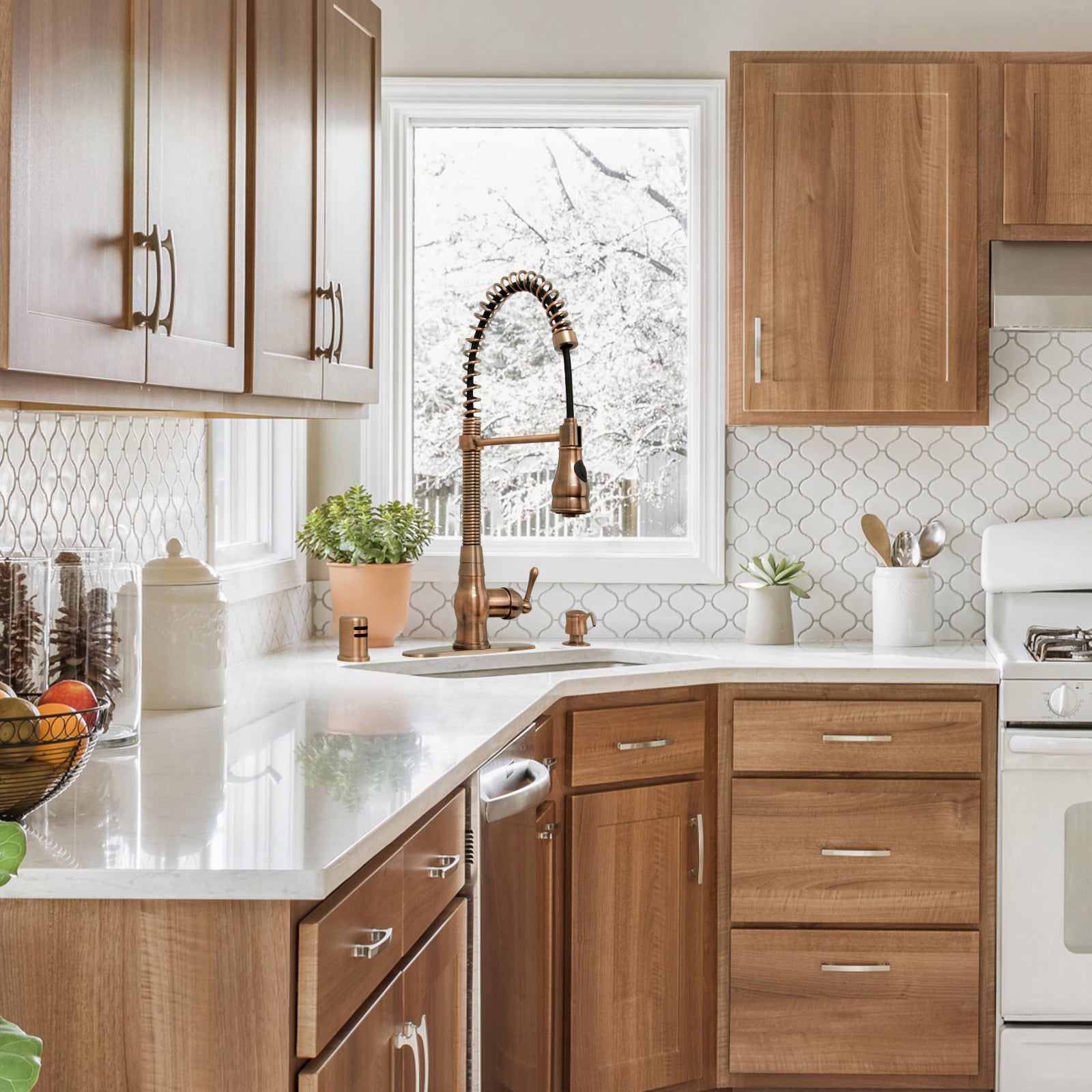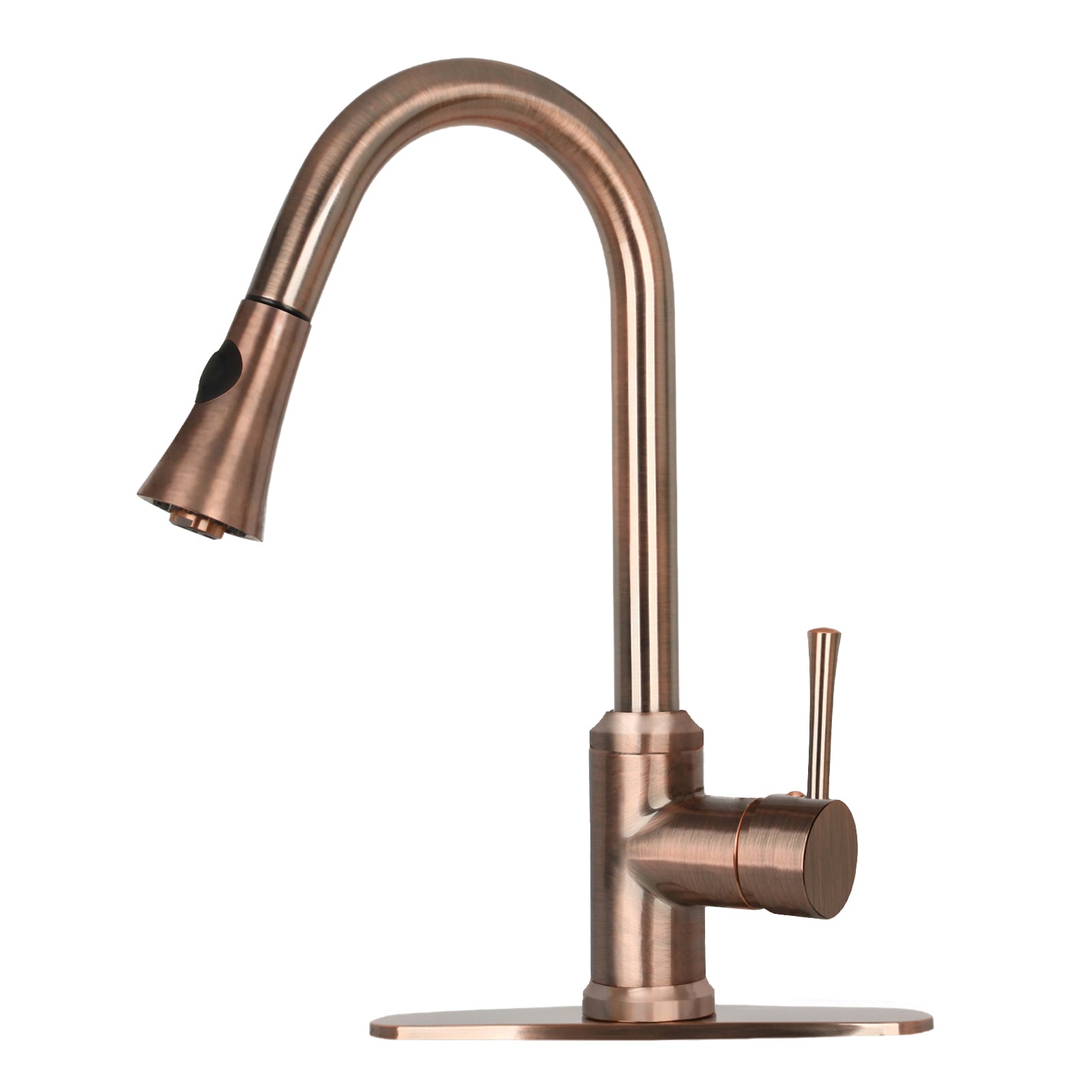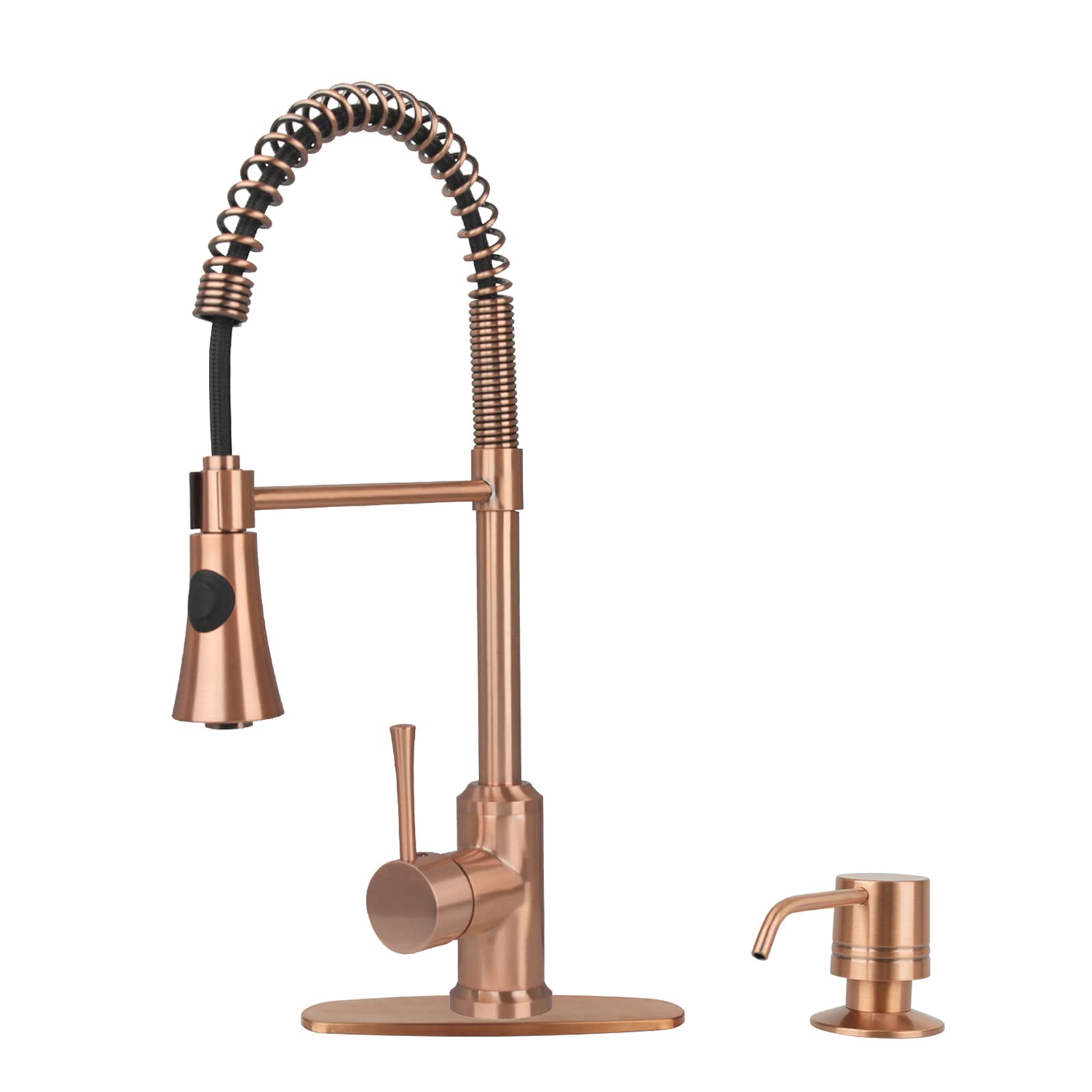How to clean copper faucets? Copper faucets add a touch of elegance and warmth to any kitchen or bathroom. Over time, however, they can develop tarnish, mineral deposits, or water spots, affecting their appearance. To keep your copper faucets looking their best, regular cleaning and maintenance are essential. In this comprehensive guide, we will explore various methods and techniques for cleaning copper faucets. From natural ingredients to commercial cleaners, we will cover all the necessary steps to restore the shine and beauty of your copper fixtures. Let’s delve into the world of copper faucet cleaning and discover how to keep them looking impeccable.
![]()
Gather the Necessary Tools and Materials:
Before starting the cleaning process, gather the following tools and materials:
- Soft microfiber or cotton cloth
- Mild liquid dish soap
- Lemon juice or white vinegar
- Baking soda
- Non-abrasive sponge or toothbrush
- Soft-bristle brush
- Commercial copper cleaner (optional)
- Protective gloves (optional)
- Old toothbrush or cotton swabs (for hard-to-reach areas)
Ensure you have all the necessary tools and materials ready before proceeding with the cleaning.
General Cleaning Techniques:
For regular cleaning and maintenance of faucets in styles, consider the following steps:
- Prepare a cleaning solution: Fill a bowl or container with warm water and add a small amount of mild liquid dish soap. Mix the solution gently until it foams.
- Wipe the faucet surface: Dip a soft cloth into the cleaning solution and wring out any excess moisture. Wipe the copper faucet surface, paying attention to areas with tarnish, water spots, or mineral deposits. Apply gentle pressure and avoid scratching the surface.
- Rinse with clean water: Rinse the cloth with clean water and wring out any excess. Wipe the faucet surface again to remove any residue from the cleaning solution. This step helps maintain the shine of the copper and prevents soap buildup.
- Dry thoroughly: Use a dry microfiber or cotton cloth to dry the copper faucet completely. This prevents water spots and ensures a streak-free finish.
Removing Tarnish and Mineral Deposits:
For more stubborn tarnish or mineral deposits on copper faucets, consider the following techniques:
- Lemon juice or white vinegar: Squeeze some fresh lemon juice or apply a small amount of white vinegar onto a soft cloth. Gently rub the tarnished areas of the copper faucet, allowing the acidic properties of the juice or vinegar to break down the tarnish. Rinse the faucet with clean water and dry thoroughly.
- Baking soda paste: Make a paste by combining baking soda with a small amount of water. Apply the paste to the tarnished areas of the copper faucet. Gently scrub the surface using a non-abrasive sponge or soft-bristle brush. Rinse the faucet with clean water and dry thoroughly.

Specialized Copper Cleaning:
For heavily tarnished or deeply stained outdoor faucets, you may need a specialized copper cleaner. Consider the following steps:
- Read instructions: Read and follow the instructions provided with the commercial copper cleaner carefully. Ensure the cleaner you choose is suitable for copper fixtures and does not contain harsh chemicals.
- Wear protective gloves: Since commercial cleaners can be more potent, it is advisable to wear protective gloves to avoid direct contact with your skin.
- Apply the cleaner: Apply the copper cleaner to the tarnished areas according to the instructions. Use a soft cloth or sponge to work the cleaner into the surface. Follow any recommended soaking time.
Maintaining Copper Faucets:
To keep copper faucets looking their best and minimize the need for extensive cleaning, consider the following tips:
- Wipe after use: After using the faucet, wipe it down with a clean, dry cloth to remove any water spots or soap residue.
- Avoid abrasive cleaners: Avoid using abrasive cleaners or harsh chemicals that can damage the copper finish. Stick to mild liquid dish soap, natural ingredients, or specialized copper cleaners.
- Regular maintenance: Perform regular cleaning and maintenance on your copper faucets to prevent tarnish or mineral buildup. This will help maintain their shine and prolong their lifespan.

Advantages of copper faucets
Copper faucets have gained popularity in recent years due to their unique aesthetic appeal and functional qualities. Known for their warm, rustic, and timeless charm, copper faucets offer numerous advantages that set them apart from other faucet materials.
Aesthetic Appeal:
Copper faucets bring a distinctive and captivating appearance to any kitchen or bathroom. Consider the following advantages:
- Warmth and elegance: The rich, warm tones of copper create an inviting and elegant ambiance in any space. Whether polished to a bright shine or left to develop a natural patina, copper faucets exude a level of charm and sophistication that adds character to the room.
- Unique patina development: Over time, shower faucets develop a unique and beautiful patina. This natural aging process enhances their appearance, creating an organic and ever-changing quality that can become a striking focal point in the kitchen or bathroom.
- Versatile design options: Copper is a highly malleable material, allowing for intricate and detailed designs. From vintage-inspired pieces to contemporary shapes, copper faucets offer a wide range of design options to suit various interior styles.
Durability:
Copper faucets boast exceptional durability, making them a long-lasting investment for any space. Consider the following advantages:
- Corrosion resistance: Copper is naturally resistant to corrosion, making copper faucets highly durable and suitable for both indoor and outdoor use. They can withstand exposure to moisture, humidity, and temperature changes without compromising their structural integrity.
- Sturdy construction: Copper is a strong and robust material that can withstand daily use and high water pressure. Copper faucets are less susceptible to damage compared to other materials, providing longevity and ensuring a reliable performance over time.
- Resistance to wear and tear: Copper faucets are less prone to scratches, dents, and staining. The robust nature of copper allows it to retain its original appearance and shine, even in high-traffic areas.

Antimicrobial Properties:
Copper faucets offer inherent antimicrobial properties that contribute to a healthier and cleaner environment. Consider the following advantages:
- Bacteria resistance: Copper has been proven to naturally inhibit the growth of bacteria, viruses, and fungi. Studies have shown that copper surfaces have an antimicrobial effect, reducing the risk of cross-contamination and contributing to better hygiene in the kitchen or bathroom.
- Self-sanitizing benefits: The antimicrobial properties of copper faucets enable them to self-sanitize to a certain extent. Copper ions released from the surface hinder the multiplication and survival of microbes, ensuring a safer and cleaner water source.
Conclusion:
Cleaning copper faucets allows you to maintain the beauty and shine of these elegant fixtures. With regular cleaning and proper maintenance, you can keep your copper faucets looking impeccable for years to come. By following the steps outlined in this comprehensive guide, you can effectively remove tarnish, mineral deposits, and water spots without damaging the copper finish. Remember to choose suitable cleaning options, use gentle techniques, and dry the faucets thoroughly to prevent water spots or streaks.

